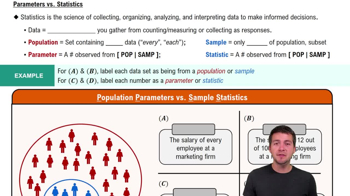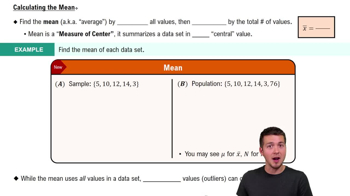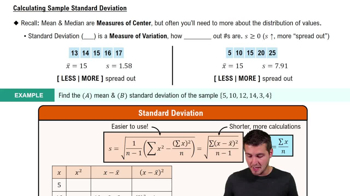Building Basic Skills and Vocabulary
Given a data set, how do you know whether to calculate σ or s?
 Verified step by step guidance
Verified step by step guidance Verified video answer for a similar problem:
Verified video answer for a similar problem:



 8:45m
8:45mMaster Calculating Standard Deviation with a bite sized video explanation from Patrick
Start learning